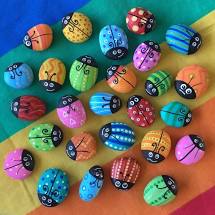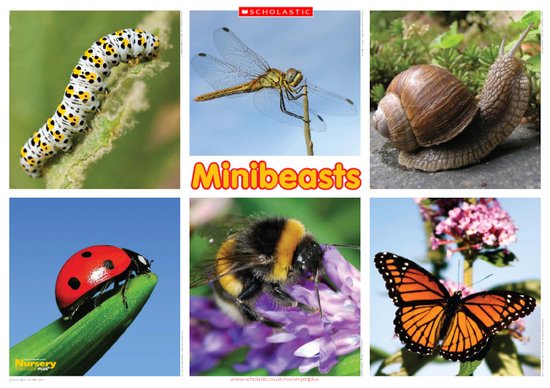A minibeast Eyfs is a topic in the foundational primary school nations science curriculum. The topics cover learning about ‘invertebrates’ – the scientific term for small species without a backbone. There are 25,000 different minibeasts in the UK alone, such as spiders, snails, worms, and insects.
What are minibeasts?
Minibeast terms refer to ‘small animals’ such as spiders, insects, millipedes, worms and snails. These are creatures without a backbone that provides a structure and support to other animal species, i.e. humans and other mammals. In scientific terms, minibeasts are ‘invertebrates’ some of whom have ‘exoskeleton’. The exoskeleton is a shall-like hard casing on the outside of some minibeast bodies (e.g. spiders). Crabs, jellyfish, starfish, corals are the seaside minibeasts.
Minibeasts make up nearly 97% of Earthly leaving creature who populated the planet for over 550 million years. They have evolved in such ways that the way they look and their colours support their survival.
Although their size minibeasts are vital for Earthly ecosystem and human survival and well-being. They often do invisible jobs of recycling waste products and pollination of plants. They also are an important source of protein for many other animal species, including humans. Some say that minibeasts are the food of the future.
Where can I find free materials to teach minibeasts EYFS topic?

BBC website offers fantastic Listen and Plac activity with complimentary teacher notes.
Pinterest is a treasure trove sie of activities that will aid minibeasts EYFS learning. We particularly enjoyed Sarah’s idea at Whimsical Mumblings that suggested to collect rocks and use them to paint minibeast. The activity allows embedding outdoor learning, art, math and science – a truly interdisciplinary learning approach.
The teachers can also tie English and Maths learning into minibeasts EYFS learning. Scholastic website resource bank offers a free learning pack of activities to complement Julia Donaldson’s and Axel Scheffler’s wonderful picture book Superworm.
How can I make minibeast EYFS topic fun?

Of course, the best way to learn about minibeasts EYFS is to discover through personal experiences. The teacher can organise a minibeast exploration trip to the local park or woods. There are some many common to the UK incent species to find. Worms, flies, spiders, woodlice, slugs, snails and many many more.
Another idea is to run in-class science stations. There is an option of buying a butterfly kit, ant or worm kit from a range of online retailers. Alternatively, it is a fun activity to build DIY worm, snail or stick insect house and have some low maintenance class pets.
The whole class can engage in building bug hotels. It can be a grand style hotel or a series of small individually designed bugs houses. Let your learner creativity run when designing the spaces for the bugs. Then go out, build them and watch how grateful tenants will soon populate their new places.
A visit from an education animal interaction company can bring a real ‘wow’ factor to the minibeast EYFS learning experience. The school can book a visit from a company such as Animal Club who offer range-led tailored educational sessions with live minibeast and other exotic creatures.

